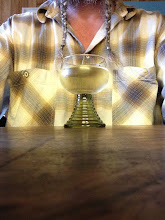If you want to understand some old fashioned dualities, that architecture is for instance and almost by definition clean and building almost by definition dirty, or that builders are about building and architects are about worrying about building, then turn your house in to a building site. It's not fun and it's expensive but it makes you think. For one, because everything is dirty, none of the delicate systems we 'build in' to operate everything from kettles and boilers to communication devices of all kinds, suddenly work! And if they do work they suddenly look as if they shouldn't, bits of wire hanging out and sad looking dusty screens don't make for confidence, and all of these things have to be fixed by remote consultation with other systems, even the internet connection has to be re-authorised by other people. But architects don't know much about pipes and wires! Your average architect couldn't keep up with the specifications even if he was interested. The problem for architects is their specialism is generalism. So no wonder architects have fetishized this stuff so consistently.
It is true conceptually then, that the 'architecture' of the house has indeed become all those pipes and wires Reyner Banham and Archigram proselytised, unfortunately rather innocently, and that we have left our notion of home behind. But unfortunately our everyday houses are not yet built by NASA, they are built by Nic, Fiona and somebody called Moscow, and Nic's not worried like you are, he's filthy, and waiting for his Friday night wrap.The sixties in architecture, marked by Archigram in particular, should therefore represent a crucial moment in the increasing specialisation of the building industry, whereby architects have finally become technocrats wielding spreadsheets, while builders do something else entirely (that is unless you are in NASA or Switzerland, who happen to represent the most impossibly benign of utility providers). Archigram didn't get the politics, it remains a happy land, Superstudio did (image above) and it looks monstrous, and they manifested that monstrosity in pictures.
Today the possibility of architecture students understanding 'building technology' at all seems more remote than ever, it represents an absolute innocence, and if you follow the logic, that should be exactly the case; such a schism is inevitable and unbreachable. Architects have become conveyors of happy looking pictures, pieces of desire, advertising (very Archigram) but also, crucially (and not very Archigram at all) the professional minders of backs. This I suspect, is extremely sad for a hopeful young architecture student to understand, that all his or her basic instincts about enjoying building (homes!) are squashed under the weight of the divisive superstructure of late capitalism.



No comments:
Post a Comment